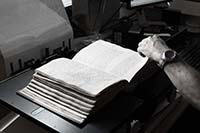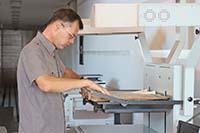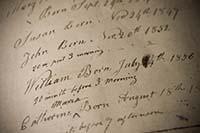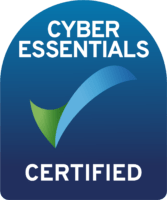Once your digitisation has been completed, you will need to present it and preserve the digital files you have created.
After digitisation you need to consider how you are going to present your content to your users. Obviously you need to have decided the mechanism for doing this well in advance of even starting the digitisation process because it will have had an impact on the digitisation process.
You also will want to protect your digitised media and metadata for the long term to avoid having to digitise your items again.
Here are a few things to consider:
Online presentation
It may be that your collections management system already has an online presentation tool. if that is suitable for your needs then simply linking your images or audiovisual media to the item record and publishing it may be all you need to do.
Otherwise you are going to need to consider using a viewer system or an online database. During the last 5-6 years we have been working with intranda to help or clients present their items online using the Goobi Viewer.
The Goobi viewer is an open source solution for the presentation of digitised cultural assets. In addition to the pure object display, it also supports the merging of works into digital collections and a search in the entire database. Goobi Viewer has a IIIF Image viewer featuring deep zoom, downloadable metadata, citation links and persistent URLs. All of these features mean that it complies with the latest standards and the recently published aspirations of the Towards a National Collection programme.
The user interface of the Goobi viewer is available in various languages and can be completely adapted to individual requirements. The content can be curated and individual pages created using the integrated content management system.
Digital Preservation
Digital Preservation is defined as follows by the Library of Congress:
“Digital Preservation is the active management of digital content over time to ensure ongoing access”
The preservation of electronic information is a vital function of all digital based systems particularly in cases where the content to be preserved relates to heritage projects and where the reacquisition of said data would be expensive and time consuming.
There are three levels of digital preservation to consider:
- the ‘bit’ level, comprising hardware and media
- the document or dataset level, comprising applications and formats
- the information level, comprising context and content.
All of these can become subject to obsolescence or loss over time.
At bit level there is the risk of bit rot, undetected hardware failures happening during electromagnetic events or during migration or backup and restore. Bit rot may remain undetected until the file is opened many months or years or even backup cycles later. The way to detect bit rot is through checksums calculated before and after transmission and before and after migration. Some archive systems also use built-in checksums to check on static files.
At the format level the use of standard formats can at least postpone if not prevent format obsolescence. Organisations are unlikely to be able to support a long list of formats in archives and early conversion of office documents to the archive format PDF-A is recommended. Scanned images may be standardised on TIFF, PDF-A or JPEG2000.
The third risk, loss of context and content, occurs mostly during migrations. Long-term records must survive many generations of systems. When migrating documents between successive database systems organisations need to migrate not only the files but also their structural context, metadata, audit trail and embedded versions. The preservation of access control rights and retention settings would also be desirable.
The Digital Preservation Coalition is a non-profit network of organisations dedicated to the sharing of information and best practice surrounding digital preservation in order to ensure our collective digital memory is preserved. They are an excellent source for digital preservation knowledge and they have published a digital preservation handbook which SDE recommends is used as a reference source.
If you’d like to chat through any of these aspects then please get in touch and we’d be happy to help.





